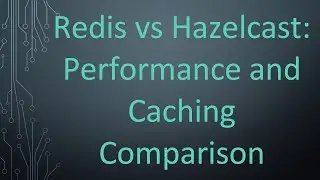Downloading Files and Streaming Responses with HttpClient in Java
Disclaimer/Disclosure: Some of the content was synthetically produced using various Generative AI (artificial intelligence) tools; so, there may be inaccuracies or misleading information present in the video. Please consider this before relying on the content to make any decisions or take any actions etc. If you still have any concerns, please feel free to write them in a comment. Thank you.
---
Summary: Learn how to efficiently download files and stream responses using HttpClient in Java, exploring its capabilities for handling large files and optimizing network performance.
---
In Java, downloading files and streaming responses from web servers is a common task, often performed using the HttpClient library. HttpClient provides a flexible and efficient way to interact with HTTP resources, allowing developers to download files and handle streamed responses with ease.
Downloading Files
HttpClient simplifies file downloading by providing built-in methods to execute HTTP GET requests and save the response to a file. Here's a basic example:
[[See Video to Reveal this Text or Code Snippet]]
This code snippet demonstrates how to use HttpClient to download a file from a given URL and save it to a specified destination on the local filesystem.
Streaming Responses
Streaming responses allow you to process large amounts of data without loading everything into memory at once. HttpClient supports streaming responses through its BodyHandlers.ofInputStream() method, which returns an InputStream that can be read incrementally.
[[See Video to Reveal this Text or Code Snippet]]
This example demonstrates how to stream the response from a URL and process it line by line using an InputStream and a BufferedReader. This approach is particularly useful for handling large responses efficiently without consuming excessive memory.
Conclusion
HttpClient in Java provides powerful capabilities for downloading files and streaming responses from web servers. By leveraging its APIs effectively, developers can efficiently handle various HTTP interactions, optimize network performance, and build robust applications that interact with web resources seamlessly.































